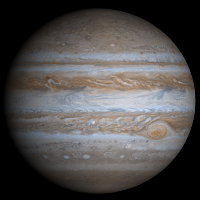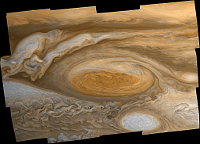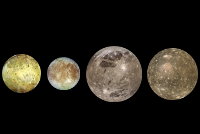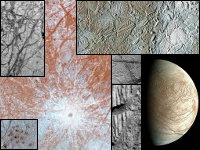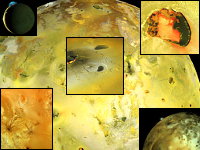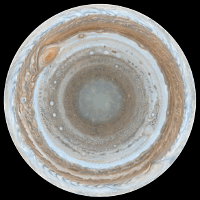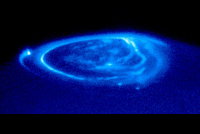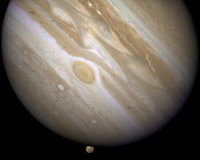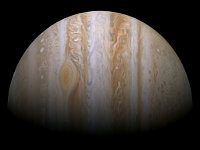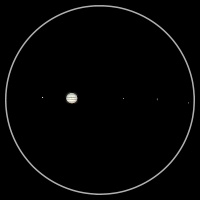Mass
Jupiter is the largest and most massive planet in the Solar System, even though it is made almost entirely of the lightest gasses there are. It is actually two and a half times more massive than all the other planets combined! Despite its size, it has the fastest rotation rate of any planet—just 10 hours. Since it's not solid, different parts actually rotate at slightly different speeds which creates vortices in the atmosphere. We see these vortices as oval spots, most of which are white. The largest one is the famous Great Red Spot which is usually reddish for unknown reasons.
Stripes
Many of the clouds we see are made of ammonia ice crystals. They make up all the light-colored stripes, which astronomers call "zones". The darker stripes are called "belts", and the clouds there contain chemicals like sulfur and phosphorus that get darker in sunlight.
Moons
Jupiter has 63 known moons. Many of them are tiny captured asteroids that orbit far from the planet. Four of them are large and bright, and have been known since Galileo Galilei first pointed his home-made telescope at Jupiter. These Galilean moons were important, because they proved that there were objects in the universe that did not revolve around the earth. The Galilean Moons are each unique worlds which would be considered planets if they orbited the sun. Ganymede has a puzzle-piece surface made of rock, and mixed rock and ice. It may have a layer of liquid salt water deep beneath the crust. Callisto has no geologic processes, so the surface is the same everywhere: dark rock
covered by impact craters and frost. Io is the most volcanically active body in the Solar System, and its surface features are caused by lava flows and ash deposits. Europa probably has a warm, salt-water ocean just a few kilometers under a shell of ice on the surface. The ocean acts like the mantle on Earth, allowing large blocks of surface ice to creep around and collide with each other like our continents.

